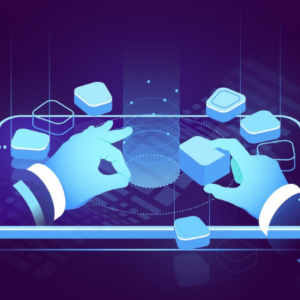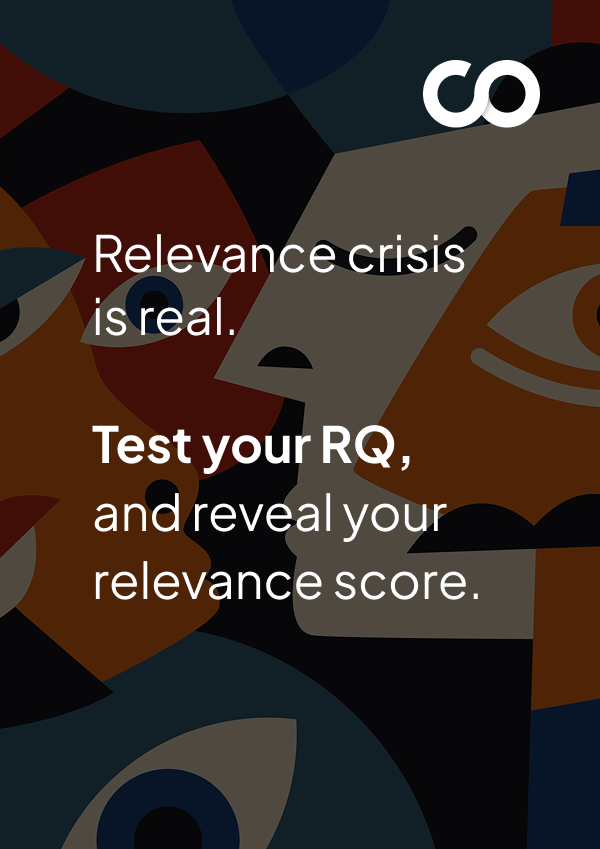Cyber Security Consulting Services
Cyber Security Consulting Services for Scalable Resilience

From Reactive Defense to Proactive Confidence
Security breaches disrupt operations, erode customer trust, trigger compliance penalties, and inflict long-term brand damage. With multiple cloud environments, remote teams, and third-party integrations, data protection has become more complex. Traditional perimeter-based defenses are no longer sufficient.
Codewave’s cybersecurity consulting services help transform cybersecurity from a reactive function into a proactive growth strategy. We help companies design adaptable security solutions that scale and evolve with their technology infrastructure. Our comprehensive cybersecurity advisory covers risk assessment, zero-trust architecture design, data protection, cloud security, compliance readiness, and incident response.
By applying design thinking and advanced frameworks like MITRE ATT&CK and NIST, we identify security gaps early, simplify complexity, and guide decision-makers to act with confidence. Our strategies include securing APIs for fintech apps, hardening multi-cloud infrastructures, implementing predictive threat analytics using AI, and more.

Here’s how your organization can benefit:
90%
Fewer Security Incidents
100%
Compliance Alignment
3x
Faster Threat Detection & Response
Download The Master Guide For Building Delightful, Sticky Apps In 2025.
Build your app like a PRO. Nail everything from that first lightbulb moment to the first million.
Cybersecurity Consulting That Transforms Risk Into Measurable Resilience
We provide complete cybersecurity consulting for software-driven businesses. Our services include securing cloud-native architectures, managing identities, and building scalable applications and governance frameworks. Every recommendation is practical, designed to minimize risk and ensure future-proof security..
Cloud environments are constantly evolving, which makes it easy for security risks to slip through unnoticed. Over time, issues like unencrypted data and exposed APIs can make your systems more vulnerable to attacks.
At Codewave, we simplify cloud security by assessing your cloud systems to identify weak spots or misconfigurations using trusted tools like Prisma Cloud, AWS Security Hub, and Azure Defender.
We then redesign your architecture to improve security by implementing better access controls, encrypted communication, and automated protections with tools like Terraform. Additionally, we integrate ongoing checks into your development process to catch and fix risky changes before they impact your production systems. The result is stronger security, reduced risk, and tighter control over your cloud environment.
Example: A logistics SaaS product may experience unexpected AWS cost spikes and data exposure due to misconfigurations. We’ll recommend scanning assets with AWS Security Hub, encrypting sensitive data, and applying Terraform guardrails. This will reduce risks and ensure consistent enforcement of security policies.
Modern applications collect vast amounts of user data through APIs, CRMs, and analytics tools. Without centralized governance, sensitive data may be duplicated or unintentionally shared across systems. This leads to compliance challenges and reputational risk.
Codewave helps organizations bring control and transparency to their data. Using tools like BigID and Varonis, we discover where sensitive data resides, how it moves, and who can access it. We then define clear data-handling policies, enforce encryption (AES-256/TLS 1.3), and apply tokenization to protect personal information.
Our team also integrates smart data-retention workflows built on Node.js, .NET, or Python that automatically archive or delete outdated data. This reduces exposure, simplifies audits, and ensures compliance with GDPR, HIPAA, and SOC 2 standards.
Example: Imagine a healthcare SaaS platform complains of storing duplicate patient records across multiple databases. We will identify redundant datasets with tools like BigID, centralize encrypted storage, and automate backend archival routines. This will ensure full HIPAA compliance, improved data accuracy, and stronger patient trust.
As businesses scale, each new integration, API, or microservice can introduce potential threats. Unchecked vulnerabilities often lead to data exposure, compliance violations, or loss of customer trust.
Codewave identifies and addresses these risks before they impact your business. Using tools such as Qualys, Nessus, and Rapid7, we conduct in-depth vulnerability assessments across applications, APIs, and infrastructure to identify weaknesses. Our specialists then conduct manual penetration testing in accordance with the OWASP Top 10 standards. This way, we validate each issue and prioritize fixes based on real-world exploitability.
For API-driven or cloud-based systems, we use Burp Suite and Postman Security to detect authentication flaws and injection vulnerabilities before they reach production. Every engagement concludes with a clear, actionable remediation plan that helps your teams strengthen security while maintaining delivery speed.
This approach enables faster risk closure, fewer false positives, and full visibility for leadership through an easy-to-understand security dashboard.
Example: If a fintech app faces repeated login bypass incidents that reduce user confidence, we’ll recommend simulating targeted attacks with Burp Suite to pinpoint weak session controls. This will help implement stronger token validation. The result will be fewer login exploits, restored trust, and improved overall platform integrity.
As teams expand and systems multiply, users often keep access they no longer need. Over time, this “privilege sprawl” weakens control, increases insider risk, and complicates audits.
Codewave helps organizations regain clarity and control over who can access what and why. Using tools like Okta, AWS IAM, and Azure AD, we design structured access models. These include role-based and attribute-based controls that ensure every user has only the permissions necessary for their role.
We also implement multi-factor authentication (MFA) and Just-In-Time (JIT) access, allowing temporary elevated access when required. For development and DevOps teams, we recommend managing secrets with tools such as HashiCorp Vault or AWS Secrets Manager to prevent credentials from being stored in code repositories.
This results in fewer access-related incidents and full audit traceability across users and systems.
Example: A SaaS engineering team uses shared credentials for staging environments. We will suggest deploying Okta-based single sign-on, enforcing MFA, and storing credentials in Vault. This will eliminate the need for shared keys and enhance accountability.
Many organizations invest heavily in cybersecurity without clear insight into whether those efforts truly reduce business risk. Static audits and fragmented reporting make it difficult for leaders to see where to invest or how much exposure remains.
We help bring measurable clarity to cybersecurity decision-making. Using FAIR-based risk models and tools like RiskLens, we translate technical vulnerabilities into financial impact metrics. This helps leaders understand what’s at stake in business terms.
By aligning with frameworks such as NIST CSF and ISO 27001, we develop compliance strategies that meet both regulatory and organizational objectives. We also design real-time compliance dashboards in Power BI or Tableau to track risk scores, audit readiness, and control performance.
This approach enables faster audits, stronger investor confidence, and smarter allocation of security budgets.
Example: A fintech firm may struggle to communicate cyber risks to investors. We will implement a FAIR-based risk-scoring strategy and build Power BI dashboards to visualize the business impact of each risk. This will simplify board reporting and inform more informed cybersecurity investment decisions.
Even with strong defenses, cyber incidents can still happen. What defines resilience is how quickly your organization can detect, contain, and recover without losing customer trust or operational continuity.
Our experts help businesses build that confidence. Our consultants design incident response frameworks aligned with MITRE ATT&CK and NIST 800-61 guidelines, ensuring every team knows what to do when a breach occurs. We integrate tools such as Splunk Phantom, TheHive, and IBM QRadar to automate alert handling, correlation, and escalation, thereby reducing the time to act.
To strengthen recovery, we recommend using AWS Backup for immutable backups and defining disaster recovery playbooks that restore core systems within hours. Quarterly simulations test real-world attack scenarios, ensuring your teams stay prepared and confident under pressure.
This approach leads to faster containment, lower recovery costs, and uninterrupted operations even during high-impact events.
Example: Imagine a digital marketplace faces a DDoS attack that freezes online checkouts. We’ll advise deploying Cloudflare DDoS protection, setting up automated alerts in QRadar, and creating a failover route through AWS Route 53. The result will be rapid recovery, minimal downtime, and stronger resilience against future attacks.
As software companies scale, managing security in real time becomes complex and costly. Traditional monitoring systems often generate endless alerts without context, leaving teams overwhelmed and blind to real threats.
Our managed detection and response (MDR) services help businesses gain clarity and control. We use advanced tools like CrowdStrike Falcon, SentinelOne, and Elastic Security to detect suspicious activity early and respond automatically. Our experts design custom playbooks that integrate with your DevOps pipelines, ensuring that every alert leads to a precise, measurable action.
With machine learning–based detection and SOAR automation, we isolate threats and trigger response workflows instantly, cutting down both detection and response times. The result is continuous protection, 24×7 visibility, and faster incident recovery, without the overhead of running a full-scale SOC (Security Operations Center).
Example: A SaaS firm may experience alert fatigue from thousands of daily notifications. Our cybersecurity consulting services will help them consolidate logs, build Splunk Phantom playbooks, and automate patching for recurring alerts. This will reduce noise and ensure quicker responses to threats.
Many companies lack a cohesive cybersecurity strategy. Our vCISO (Virtual Chief Information Security Officer) services provide strategic leadership to develop a comprehensive security program.
We define governance structures and ensure your cybersecurity initiatives align with business goals. Using ServiceNow GRC, Power BI, and Jira dashboards, we enable leaders to track key metrics, including compliance progress and policy adherence.
We also mentor internal teams on frameworks such as Zero Trust and incident playbook maturity. This ensures that cybersecurity becomes part of your culture, not just a checklist.
Example: A retail brand expanding to multiple markets may lack centralized security oversight. We will assign a vCISO, establish KPIs through ServiceNow dashboards, and formalize a risk governance board. This will align teams under a single security strategy, enhancing visibility into decision-making.
Transform risk into resilience. Build digital trust that scales.
Schedule your Cybersecurity Consultation Today
Our No-Guesswork Cybersecurity Consulting Process
We begin by understanding your organization’s mission, digital ecosystem, and regulatory environment. Through stakeholder interviews and system walkthroughs, we identify how critical assets, such as data, infrastructure, and IP, support day-to-day operations.
Parallelly, we assess your external threat using OSINT and threat intelligence feeds to understand what risks your industry and tech stack are most exposed to. This sets a foundation for aligning cybersecurity priorities with your real-world business drivers.
Next, we build a visual representation of your existing security environment. This includes cataloging key systems (cloud, apps, data stores), identifying integration touchpoints, and reviewing how monitoring, access, and recovery are managed.
We often use asset discovery and mapping tools (such as Tenable, Qualys, or Wiz) to visualize your digital footprint and identify blind spots, including unmanaged endpoints and shadow services. The outcome is a baseline view of your ecosystem, clear enough to pinpoint dependencies, redundant tools, and potential risk multipliers.
We assess how well your current controls align with global frameworks, including the NIST CSF, ISO 27001, and other relevant standards. Our assessment focuses on how decisions are made: who has visibility, who can act, and how fast issues escalate.
Our analysis identifies where investments are working, and where they’re just adding noise or cost. This helps identify maturity gaps in technology, leadership awareness, and accountability.
Once visibility improves, we help leadership make sense of it. Using quantitative risk models (FAIR, Monte Carlo simulations) and scenario mapping, we translate vulnerabilities into measurable business exposure. Metrics include downtime cost, compliance penalties, or customer churn.
By connecting security outcomes to financial metrics, your roadmap moves from “must-have” spend to “growth enabler” investment.
Together with your teams, we translate findings into a phased, actionable roadmap. Each phase defines objectives, success metrics, and measurable milestones. These include strengthening IAM governance and endpoint protection, and enhancing incident response readiness.
We combine design thinking with architecture modeling to ensure solutions are both practical and scalable. Recommendations often include integrating automated policy checks into CI/CD, enhancing cloud posture management, and setting up continuous control validation to maintain ongoing assurance.
Finally, we help you formalize governance and establish a cybersecurity command-center mindset in which visibility, accountability, and learning are continuous.
We assist in defining roles, escalation paths, KPIs, and review cycles, using GRC platforms such as ServiceNow or Power BI dashboards for real-time oversight. Quarterly simulations, compliance audits, and executive scorecards ensure that your cybersecurity posture advances along with your business and technology.
Achieve Strategic Clarity With Codewave’s Systematic Approach
We start by understanding your current data landscape. This means mapping existing systems, identifying what data you're collecting, where it lives, and how teams currently access it. We also define success metrics and understand the business decisions that need better data support.
Based on the assessment, we create a roadmap that prioritizes initiatives by impact and feasibility. This includes selecting the right tools and platforms, defining data governance policies, and designing an architecture that aligns with your business goals. The strategy accounts for both immediate wins and long-term capabilities.
We build the systems, pipelines, and analytics frameworks outlined in the strategy. This involves connecting data sources, setting up processing infrastructure, creating dashboards and models, and ensuring everything integrates smoothly with existing workflows. Implementation happens in phases to minimize disruption.
Technology only delivers value when people know how to use it. We train your teams on new systems, create documentation, and establish best practices. This ensures adoption across the organization and reduces dependency on external support once the project transitions to your internal teams.
Analytics needs evolve as businesses change. We set up monitoring systems that track performance, data quality, and usage patterns. Regular reviews identify optimization opportunities, and we refine models and processes based on real-world results to ensure continued improvement.
Every blind spot in your system is a potential for disruption
Let’s secure what matters, together. Plan your Cybersecurity Maturity Assessment Today
Engineering Confidence Through Our Cyber Defense Stack
Category | Tools and Technologies |
Threat Detection & Monitoring | Splunk, ELK Stack, AWS GuardDuty, Azure Sentinel |
Vulnerability Management | Qualys, Rapid7, Nessus, Burp Suite |
Identity & Access Management | Okta, AWS IAM, Azure AD, Ping Identity |
Cloud Security & Compliance | Prisma Cloud, Check Point CloudGuard, AWS Security Hub |
Application & API Security | OWASP ZAP, Postman Security, Veracode, Snyk |
Data Encryption & Governance | HashiCorp Vault, AWS KMS, Azure Key Vault |
Endpoint & Network Protection | CrowdStrike Falcon, Fortinet, Palo Alto Networks |
Incident Response & Forensics | IBM QRadar, Splunk Phantom, TheHive |
Zero Trust Architecture | Zscaler, Illumio, Cisco SecureX |
Regulatory Compliance & Risk Management | ISO 27001 Frameworks, NIST CSF, CIS Benchmarks, GDPR Toolkit |
If every new breach feels like another setback, it’s time to turn security into a strength.
Safeguarding Industries Through Smart Cybersecurity Consulting
Industry | How Cybersecurity Consulting Strengthens Your Business |
We secure patient data, medical records, and connected devices from breaches and ransomware. By assessing data flow, access policies, and cloud configurations, we help healthcare providers maintain HIPAA compliance and protect patient trust. | |
Even brief security lapses can result in millions of dollars in losses. Our consulting services identify vulnerabilities in transaction workflows and APIs, strengthen fraud detection, and enhance encryption and access control. This helps fintech firms stay compliant with PCI-DSS and SOC 2. | |
We help retailers protect customer data, digital payments, and personalized experiences from cyber threats. Through security audits and data privacy reviews, we ensure compliance with the GDPR and CCPA, while strengthening brand trust and business continuity. | |
We secure logistics and mobility systems by assessing IoT connectivity, fleet management tools, and cloud platforms for vulnerabilities. Reinforcing encryption, identity, and network controls minimizes disruptions and keeps supply chains resilient. | |
We protect learning platforms and student data from unauthorized access, ensuring safe and inclusive digital environments. Our cybersecurity consulting services support FERPA compliance and ensure reliable remote learning for institutions of all sizes. |
Cybersecurity is no longer just a safeguard; it’s a growth enabler.
Proven Outcomes That Redefine Digital Trust
Businesses across fintech, healthcare, and retail have strengthened digital trust with our cybersecurity consulting services. We’ve helped clients achieve faster incident response, airtight data governance, and higher customer confidence, all while staying audit-ready and innovation-friendly.
Review our portfolio for a clear understanding of our success stories.
We transform companies!
Codewave is an award-winning company that transforms businesses by generating ideas, building products, and accelerating growth.
A network of excellence. Our partners.
Frequently asked questions
The cost of cybersecurity consulting depends on project scope, system complexity, and compliance needs. On average, our engagements range from $150 to $300 per hour.
We assess existing identity, access, and network layers to identify over-privileged accounts, implicit trusts, and policy gaps. Our team then builds a Zero Trust roadmap that includes IAM modernization, segmentation, and continuous verification, utilizing tools such as Okta, AWS IAM, and Azure AD.
Yes. As a cybersecurity consulting firm deeply rooted in digital product development, we specialize in DevSecOps advisory, embedding security testing and compliance gates within your CI/CD pipelines. This ensures faster delivery cycles without compromising application integrity or audit readiness.
Each engagement includes a comprehensive risk and compliance report, a prioritized remediation roadmap, and a governance dashboard with defined KPIs for ongoing improvement. We also provide executive briefings that link cybersecurity posture directly to operational and financial outcomes.
Timelines depend on scope. Smaller audits take 3–4 weeks, while organization-wide risk assessments or strategy overhauls can take 8–12 weeks. Our process-driven approach ensures measurable progress at every phase, with early insights delivered within the first few sessions.
Most in demand
Latest thinking
Don’t let evolving threats dictate how you innovate.
Let’s Build Your Cybersecurity Roadmap
































































